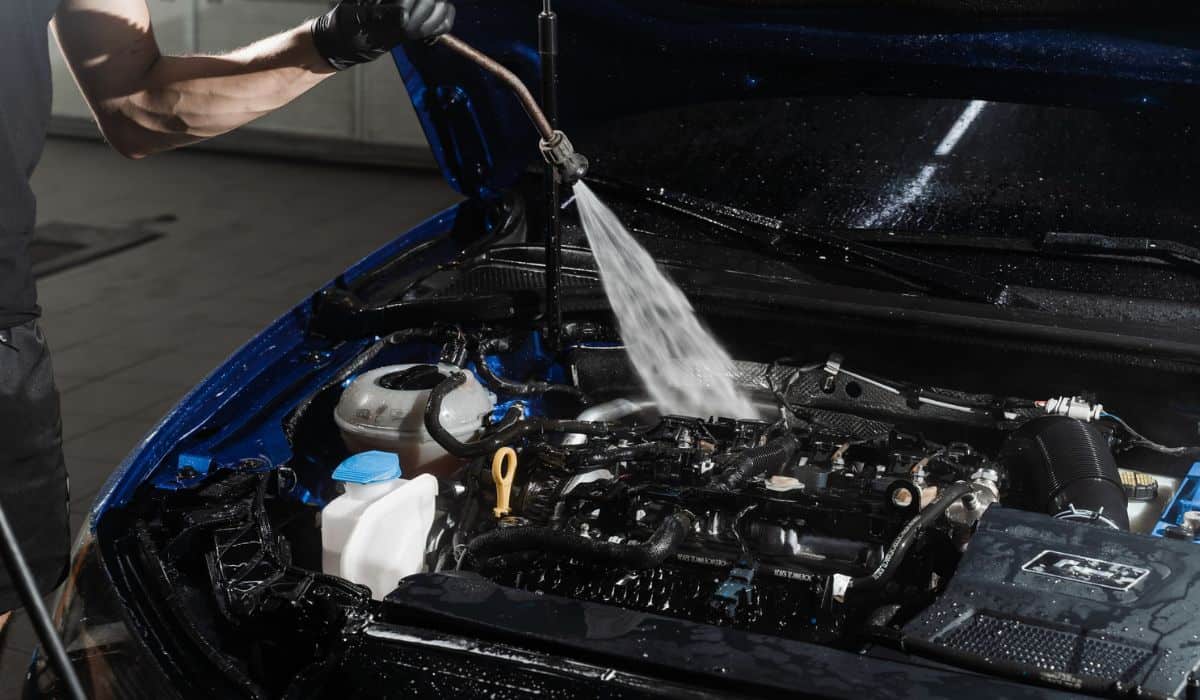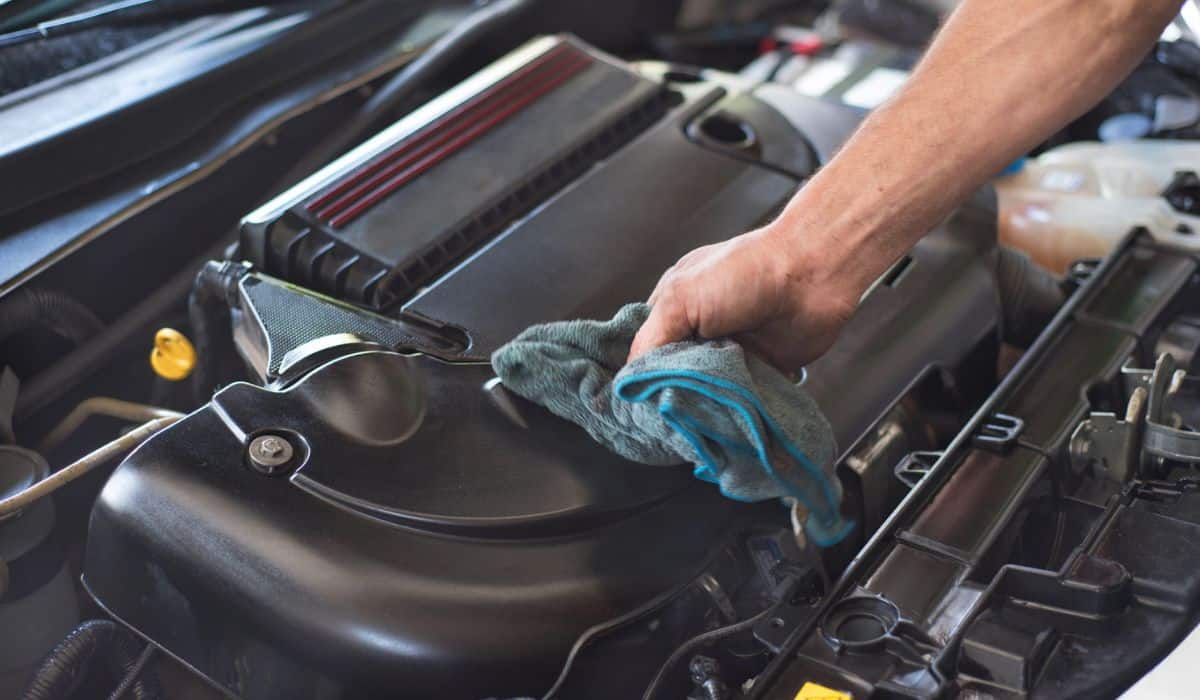Can You Hose Down A Car Engine? Is It Safe?
Although most people have a regular car wash or detailing routine, they often neglect to clean their car engines. That’s because they’re either afraid that they’ll damage some crucial component or because the engine is out of sight — and they figure it doesn’t matter whether it’s clean or not. But is it safe to hose down a car engine?
It’s possible to safely hose down your car engine, but you’ll have to take a few precautionary measures first. Avoid hitting your engine at high speed with a pressure washer as it could cause damage. Also keep your hose at a respectable distance and allow your engine to air dry after rinsing.
Cleaning your engine helps remove layers of grime, fluids, rust, and road salt, making it easier to identify any fluid leak issues that your engine might be facing. This can save you from having to get towed to the local mechanic in the future. Let’s take a look at the correct way to hose down your car engine and what tools you’ll need for this DIY project.
Can You Spray Your Engine With a Water Hose?

It’s possible to spray your engine with a water hose as long as you take the necessary precautions. Keep in mind that not all engines are the same.
If you’re cleaning the engine of a model manufactured after 2003, then it’s likely that most wires are water sealed, and you’ll only need to cover and protect a few engine parts like the alternator, battery, intake, etc.
But if you have an older car, then you’ll have to be extra careful as these cars’ parts may not be water-sealed to protect them from water.
You don’t need any fancy tools or equipment to cover up the engine components. Just take a plastic bag, shirt, or towel and wrap it around the specific part. You can also use electrical tape to seal it properly.
Before You Begin
Make sure that you keep the following things in mind when spraying your engine with a water hose:
- If you’ve recently used your car then wait for the engine to cool down before you start to hose it down.
- Don’t hold your pressure washer or water hose directly at or near the engine. Keep it at a reasonable distance.
- There’s no need to invest in a high-powered pressure washer to clean your engine because you just want to spray enough water to remove the grime and dirt from the engine. A small electric pressure washer or a simple garden hose will suffice.
- Keep the oil tank and all the reservoirs tightly closed.
- If you’re using a pressure washer, be sure to choose a low setting to protect your engine from damage.
- Check the entire engine before starting the engine cleaning process.
- Use a towel to dry the engine or allow it to air dry to make sure there aren’t any water spots. To make sure that your engine is running smoothly, turn on the engine and allow it to run. This will help dry off the water standing in the engine and offer you peace of mind as well.
What’s the Best Thing to Clean an Engine With?

If you want to tackle cleaning your engine as a DIY project, then you’ll need a few tools. The following are some of the basics that should be in your possession before you begin an engine cleaning session:
- Engine Degreaser
- Soft Detailing Brush
- Stiff Synthetic Bristle Brush
- Microfiber Cloths
- Plastic Bags
- Nitrile Gloves
- Garden Hose or Pressure Washer
- High Temp Protective Coating
Nitrile gloves (on Amazon) help to keep your hands safe from car cleaning chemicals, while plastic bags come in handy in keeping the water and degreaser away from the engine components that don’t want to get wet.
We prefer plastic shopping bags because they’re usually free of charge, readily available, and can be cut to fit any component you wish to cover.
It’s also important to invest in a good quality engine degreaser (available on Amazon) that effectively cleans diesel fuel, hydraulic fluid, motor oil, or coolant from engines.
Using two types of scrubbing brushes is also recommended. The stiff brush helps to get rid of tough grime and corrosion, while the soft detailing brush (available on Amazon) is excellent for spreading degreaser into the hard-to-reach areas of the engine bay that are easily damaged or scratched.
After rinsing away the contaminants and cleaning products with a garden hose, you’ll need to use a well-made microfiber cloth (on Amazon) to dry your engine.
Once dry, adding a high temp protective coating not only helps to keep the various components looking new but also makes future engine cleaning jobs easier.
Does Cleaning Your Engine Make It Run Better?
A clean engine makes your used car look newer and well-maintained. Some professionals who perform engine cleaning services even claim that removing the gunk formed by oil, grease, and dirt from the engine allows the car to run a little cooler.
However, this isn’t true. Although it’s possible that the oily, greasy dirt on the engine might be able to trap some heat, it’s unlikely that it would be able to cause the engine to run hotter than normal or overheat.
The most likely reasons for an overheating engine are the cooling system, the car carrying or towing too much weight, or some other issue that are totally unrelated to the cleanliness of the engine.
While there’s little evidence to prove that a cleaner engine runs better or results in longer car life, it’s definitely a sure way to help boost the car’s resale value, and, as we mentioned earlier, it can help you identify any issues with your engine that might cause you a headache later on.
